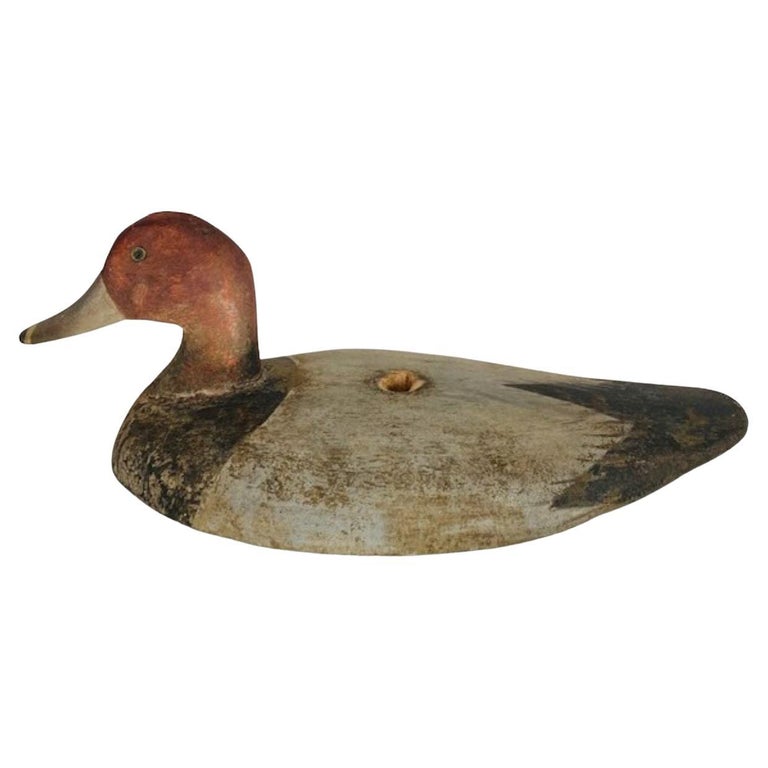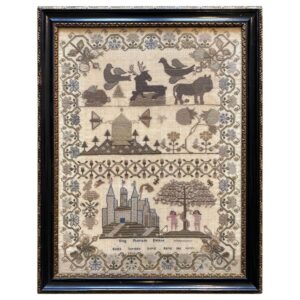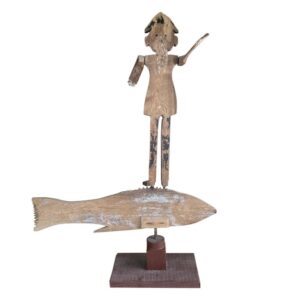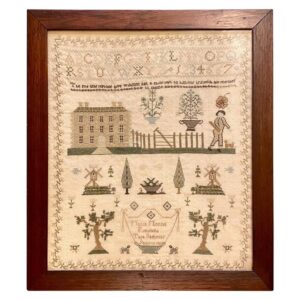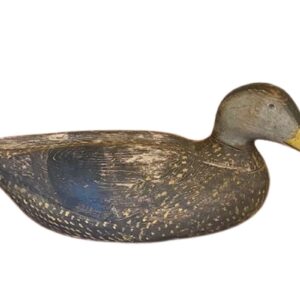Early Chesapeake Bay Red Head Drake “John Duck” Sink Box Wing Decoy, circa 1930
Early Chesapeake Bay Red Head Drake “John Duck” Sink Box Wing Decoy, circa 1930
$1,200.00
Early Chesapeake Bay Red Head Drake “John Duck” Sink Box Wing Decoy, circa 1930, a very shallow flat bodied decoy in original condition with hole drilled through back and smoothly eroded by the anchor line; in original paint with red head, gray bill with white stripe, gray and black body. In very fine used condition, dry untouched finish, and just one small chip on tip of bill; inscribed on bottom with the carved initials GS (likely for the owner of the rig).
In stock
Early Chesapeake Bay Red Head Drake “John Duck” Sink Box Wing Decoy, circa 1930, a very shallow flat bodied decoy in original condition with hole drilled through back and smoothly eroded by the anchor line; in original paint with red head, gray bill with white stripe, gray and black body. In very fine used condition, dry untouched finish, and just one small chip on tip of bill, and eyes that are distinct circles that originally held tack eyes; inscribed on bottom with the carved initials GS (likely for the owner of the rig).
Measures: 5 in H x 15-1/4 in L x 6-3/4 in W
Wing duck decoys were carved with very shallow flat bodies to sit atop the wings of a sink box and still look natural as if most of the body was beneath the water. John Ducks were the nickname given to the one decoy out of the whole rig that marked where the anchor was tied for the sink box.
The sink box was a floating raft just barely at the surface, holding a submerged box to hold the hunter hidden just below the water level: in effect a free-floating submerged hunting blind. The box was anchored in the center of an extensive rig of decoys that would number in the hundreds. The wing ducks were laid out to merge the sink box into the rest of the raft of decoys. Some were made of cast iron, quite heavy, to help submerge and balance out the sink box as ballast. The John Duck is so rare today, because each rig had only one out of the many hundred decoys deployed. Most were painted plainly, typically in just one solid color, to help the hunter recognize where his rig was anchored; it is an unusual treat to find one with proper decorative species specific paint. This is not only a fabulous piece of folk art, but also a very rare and evocative historical relic of longshore life and culture barely remembered today.
Sink boxes were very dangerous and liable to flip or sink with the entrapped hunter. But they were so effective that states soon began to restrict or even prohibit their use. By 1839, New York prohibited the use of sink boxes. From 1852 to 1897, other states such as Ohio, Michigan, Illinois, and New Jersey banned their use as well. Eventually they were outlawed in all of the United States under federal law.

